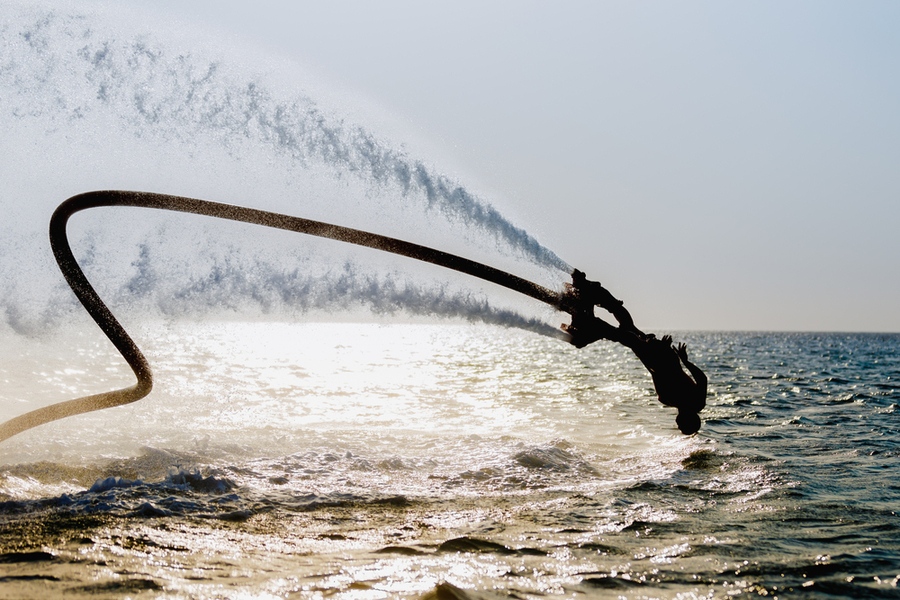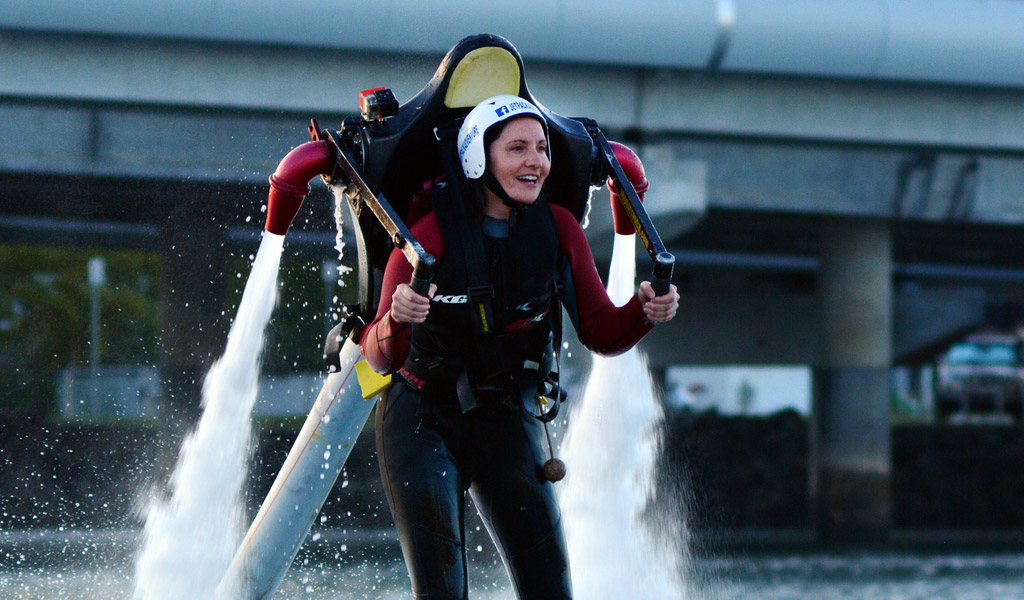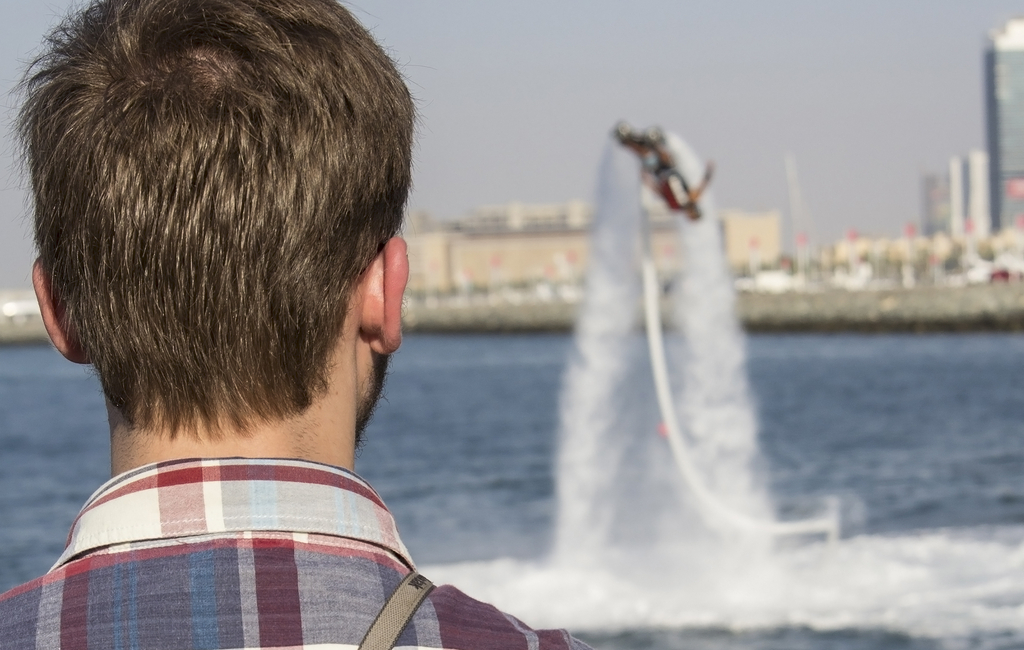In recent times, more and more people have begun to realize just how amusing, entertaining and beneficial water sports really are – flyboarding, in particular. So much so, when the season comes, there are long lines of people waiting to try their luck on the flyboard. However, even though the water sport itself is highly fun and amusing, it is anything but a piece of cake.
It can take a person anywhere from weeks to months to really obtain a significant amount of control over the board – especially because it’s atop the open ocean. In addition to just elevating above the sea and doing simple dives, there are a bunch of other tricks that can also be performed on a flyboard just like they can be performed on a skateboard or a snowboard. These tricks include dolphin dives, 360 degree flips and back flips – the only difference being that on a skateboard, your terrain is the ground, while on a flyboard you’re atop the sea or the ocean.
However, this guide on how to ace a black flip on any flyboard is ideal for all first-timers!
It’s Necessary to Understand Flyboarding
Contrary to popular belief, you don’t just need to have a significant amount of control over the balance of your body, but you must also understand the controls and mechanism of the flyboard itself. Often times, people go to ranges that provide a flyboard and the opportunity for one to try their luck at the water sport. At these places, there’s always an instructor present to elucidate the most important principles of flyboarding before they strap your feet onto the board.
Common Mistakes Made By First Timers
As much as one would like to deny this, there are some common mistakes that all first-timers have the tendency to make when they’re flyboarding. The main reason why we’ve decided to put together a list of the mistakes that you should avoid is so that you don’t regret your decision to buy a flyboard because it is highly easy for one to ruin the mechanism of the board if they’re not careful enough.
- First and foremost, when you’re engaging in flyboarding, it is extremely important for the flyboarder to be as composed as possible. If you lose your cool or start to franticly panic in mid air or after taking a dive, it’s incredibly easy for you to lose control of the flyboard and either thrash into the water or ruin the board’s mechanism.
- It’s important to maintain a good posture when you’re flyboarding. The main way to steer the flyboard into the direction you want to take it in is by shifting the weight of your body into that direction. The flyboard will follow.
- Many people make the frequent mistake of assuming that bending their knees will also assist them when trying to steer the flyboard. Although this does help, it’s important to note that one must not bend both knees at the same time, as this will make them lose their balance and lose control of the flyboard.
How to Ace a Back Flip on a Flyboard
Whether you’ve opted to rent a flyboard at Gull Lake in Brainerd, MI or buy a flyboard to give yourself as much time to practice as possible, the following tips are definitely all you require to ace a back flip and show your stunts to everyone!
Back Flips
Regardless of whether you’re setting foot on a flyboard for the first time or the hundredth time, learning how to do a back flip is certainly one of the most sought after flyboarding tricks out there! With the following tips, you’ll be able to master the trick easily and effortlessly!
- Momentum and Balance is the name of the game when it comes to doing a back flip on a flyboard. These two things are the two most important things that you must obtain control over. They are necessary for one to build up a driving force that is strong enough to permit a victorious back flip.
- Posture is the second most important thing, because without it, you won’t be able to gain balance or control over the board. Keeping your legs bent at 45º, body slightly tilted frontward and arms back, will grant you the ideal control required to master a back flip.
- Stretching out your arms vertically, but maintaining the same position of the knees (45º), prepare yourself for the flip and stretch out the entire body to face horizontally.
- Once you feel prepared, begin to lean backwards and remain as calm and composed as possible. Place your trust in the flyboard and in your ability to maintain control.
- As you lean back further, the adrenaline rush is going to kick in. At this moment, if you panic or attempt to control it, you won’t be able to successfully do the back flip. The trick is to think of it as a ‘trust fall’ and allow your body to fall freely while enjoying the sensation and the view.
- Do not stiffen your body or posture, but instead go with the flow. Keeping your posture stiff will make you lose the balance and the control that you worked so hard to obtain.
- If, for whatever reason, you lose your posture, then there is a possibility that you’ll fall flat into the water and possibly even sprain a muscle depending on the severity of the fall. However, you don’t need to fear this because it’s not very likely to happen as long as you remain calm and composed.
- While maintaining the abovementioned posture, work your way towards completing the back flip – you’ll find yourself back into vertical position if you manage to do it correctly. If not, try again a couple of times.
- Another fact to note is that for the purpose of avoiding the possibility of losing balance; stabilize your stance with the help of the momentum.
- All in all, remember that the flyboard is your friend and without placing your trust on the board, you won’t be able to excel at the sport either.
Don’t Own a Flyboard?
No need to fret over it if you don’t own a flyboard. You can easily opt to rent a flyboard at Gull Lake in Brainerd, MN or even buy a flyboard via Skyhigh Flyboard.



